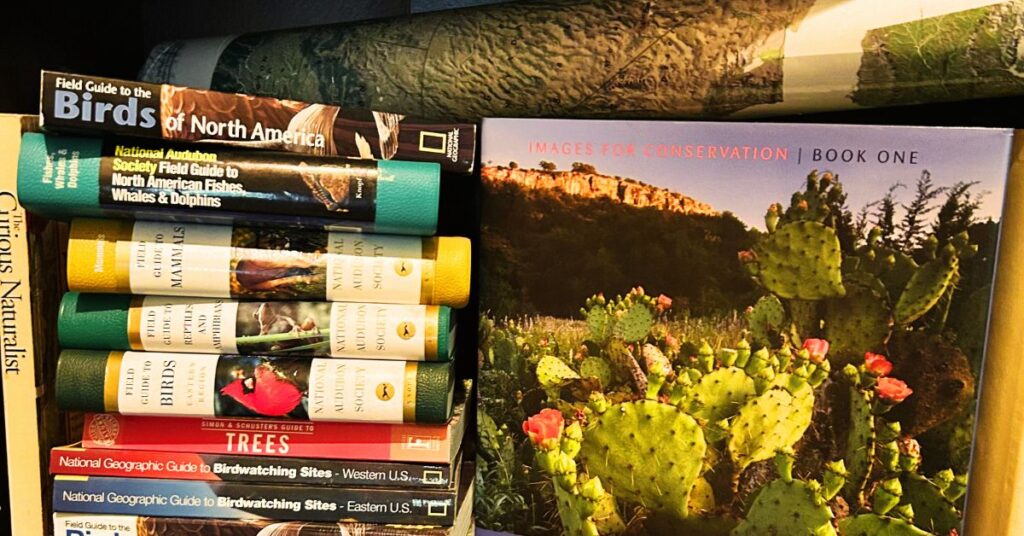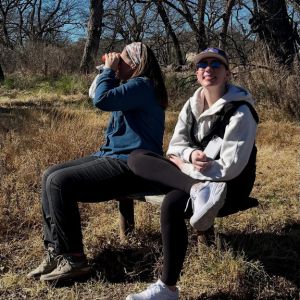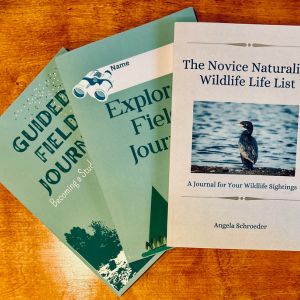*Heads up! This post contains affiliate links. This just means if you click and make a purchase I may receive a small commission. Get the full run down here.
According to a recent survey from the U.S. Fish and Wildlife Service 3 out of every 10 Americans count themselves as birders! Birdwatching, or birding, is a nature activity that can be done almost anywhere by anyone. If you would like to join the birding craze, read on to get 8 helpful tips for beginner birders.
First, a confession.
I am not an expert birder.
Second, a realization.
You don’t have to be an expert birder to enjoy birding.
Birders Connect with Nature
Birdwatching, or birding, is a type of outdoor recreation that is accessible for all ages and abilities. You don’t need any kind of license or expensive gear, and birds can be watched in your backyard, the city park, or most everywhere outdoors. Birdwatching, like other wildlife watching, helps you build a meaningful and appreciative relationship with nature. A connection to nature.
One of the great joys of being outside is simply listening to the birds sing and watching them go about their seemingly endless busy days. On any given walk in the park or down your neighborhood street you might hear and see dozens of species of birds. Are you curious about what they’re called? Maybe you wonder if they have a nest nearby? Or if they migrate and come back to your area every year.
I certainly wonder about all of these things. So, I’ve decided I want to elevate my birding game. Here’s how I am going to get better at birding and I’m hoping these 8 helpful tips will make you a better birder too!
8 Tips for Beginner Birders
There are lots of resources out there for beginner birders. This is because Americans have been enjoying birdwatching for over a century. In fact, the National Audubon Society was chartered back in 1905 to lead efforts in conservation and education about birds. Audubon has an international reputation for engaging people with birding.
I recommend making Audubon your go-to resource, even as the newest of newbie birders. But, all those links, tabs, and resources can be overwhelming. That’s why I’m starting with these 8 helpful tips:
1. Begin with Common Birds
Get to know who’s in the neighborhood! No matter where you live in North America, there are some birds that are so successful they can be found coast to coast. The American Crow, Mourning Dove, Northern Cardinal, American Robin, and other birds can be found across the United States. Check out Audubon’s article to help you learn 20 Common Birds.
The Audubon article will also help you learn about what to look for when IDing a bird. In other words, you will learn what you should be looking at when birdwatching. For practice, focus on learning to identify the birds in your backyard or local park.
Although you shouldn’t go empty-handed…
2. Get some Basic Gear
You will need some basic birding gear. You may quickly notice that getting close enough to a bird for a good look is challenging! And once you get a look, how do you know what you’re looking at? A good pair of binoculars can help you get a peek at your quarry from a respectable distance. I love the clarity of vision I get from my 8×25 Nocs, plus they come in great colors!

And to identify the bird you are observing, you’ll want some field guides. If you have never used a field guide, give my Ultimate Guide to Field Guides a read. I also suggest downloading a bird identification app, like Merlin Bird ID, to help you get practice with the process of looking up birds. Digital guides and birding apps can help you build your knowledge with photos, calls, and range maps.
But sometimes, sight isn’t an option.
3. Learn a Few Bird Calls
Many times you will hear a bird well before you spot them. Sometimes you may never actually set your sights on the bird and the only clue to their presence is their call. Don’t forget many birds are more active at night, making identification by sound more likely. Get started learning bird calls with Cornell Labs: Bird Academy.
Familiarizing yourself with common bird calls increases your chances of making a correct identification. Apps like Merlin ID and BirdNET also have features that allow you to identify bird sounds in real-time. However, a name is just a name. Once you’ve introduced yourself, then you can get to know more about the bird’s behavior and relationship with nature.
In fact, learning bird behavior will make you a better birder!
4. Bird at the Right Time
Birds are most active early in the morning or late in the afternoon. In the morning, the cooler temperatures and calm winds make it easier for birds to search for food, such as insects and seeds. During the evening, birds take advantage of the remaining daylight to gather food and prepare for roosting. These periods also provide protection from the midday heat and predators that may be more active in the middle of the day.
Additionally, birds often sing more during these times as part of territorial and mating displays. Plan to head outside with your binoculars and field guide during these times for better chances of spotting a variety of species.
5. Be Patient and Observant
Wildlife watching, including birdwatching, requires patience. It seems we are always in a hurry, even out on the trail. I myself am guilty of taking a hike with intentions to slow down and relax, but then I rush along focusing only on the trail, the points of interest, and the destination. This kind of movement won’t give many opportunities to observe birds and other wildlife.

Instead, it’s best to move slowly and stay quiet to avoid startling birds. Rather than hoofing it along the trail, take a camp blanket or chair and stay in one spot for a while. Listen for calls, watch for movement in trees or bushes, and don’t forget your Nocs!
6. Dress for Success
Birds have excellent vision. They also see in colors, plus in the ultraviolet (UV) spectrum. That’s why during mating season you will spot many male birds sporting some beautiful plumage! But, this also means they notice other bright colors in the forest.
When you head out birding, wear neutral colors. This will help you blend in with your surroundings and reduce the chance of scaring birds away. You don’t have to go all out in full camouflage, but dressing in darker and neutral tones will help you become part of the forest rather than something that doesn’t belong.
7. Keep a Birding Journal
Birders are known for keeping a Life List. A Life List is a personal record of birds observed over a lifetime. This habit of making note of observing each unique species can help you learn about all wildlife.

You can use a field journal, or any notebook will do. Record the birds you see, the date, location, and any behaviors. Journaling will help you track your progress, build your identification skills, and nurture your relationship with nature.
8. Join a Birding Community
People that outdoor recreate love to connect! Whether you want to try hiking, biking, or birding there are knowledgeable folks ready to help get you out there! A great place to start is at your local state parks.
State parks often host birding programs in the form of ranger led hikes, birding workshops, and bird counts. If you don’t have a state park nearby, search social media to connect with local birding groups. One of the best ways to learn is to attend walks led by experienced birders to learn tips and discover new birding spots.
Practice Ethical Birding
The American Birding Association welcomes new birders! The ABA is a non-profit organization focused on helping people get out there to enjoy nature and learn about birds. They work hard to help all birders “practice and promote respectful, enjoyable, and thoughtful birding” with their Code of Ethics. Basically when you’re out birding, respect the birds and their environment, and extend this respect to the birding community and others enjoying the outdoors. Happy Birding!
Embark, Explore, and Enjoy!
Discover more from Tenderfoot Hiking
Subscribe to get the latest posts sent to your email.

